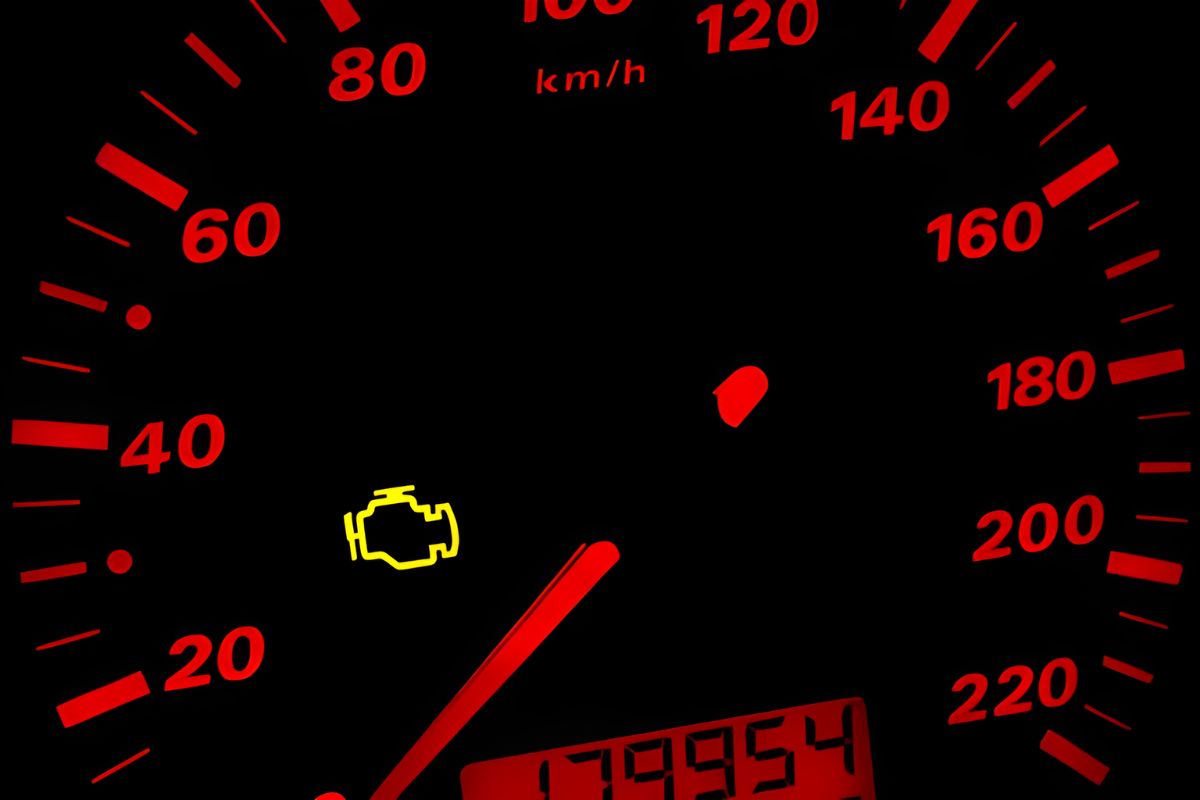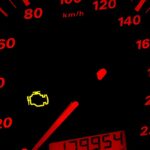How To Act When Your Check Engine Light Is Flashing

It is so easy to get a feeling of extreme anxiety when you see the engine icon on your dashboard turn on. In such instances, it is a car computer reminder. When a problem is detected by the computer, it begins to light up. When the light begins blinking, that is a very serious signal. The car screaming for your attention is the check engine light flashing, a warning you should never ignore.
Knowing what it means and the steps that should come next can assist you in preventing costly repairs and life-threatening situations. That is, all you have to know—why the light is flashing and what you should do to make sure that you and the vehicle are not in danger—is here in this paper.
Table of Contents
ToggleWhat Is The Check Engine Light, And What Is Its Purpose?
Consider the check engine light (CEL) to be a messenger. Formally referred to as the Malfunction Indicator Lamp (MIL), its task is to inform you when the onboard computer subsystem of the car, which is the On-Board Diagnostics (OBD-II) system, notices something wrong with either the engine, transmission system, or emission system.
All motor vehicles sold in the United States since 1996 have to have this system. The system of OBD-II continually observes the functioning of hundreds of devices and sensors. It logs a trouble code when it detects a problem that might elevate the emission levels or alter engine performance and displays the check engine light to alert you that something is amiss. It is an important component of vehicle maintenance in the modern world, aimed at enabling you to identify the issues in time before they can turn disastrous.
Steady Vs. Flashing: A Critical Difference
Check engine light flashing warnings are not all equal. The manner the light acts tells you how serious the problem is.
A Steady Check Engine Light
In case the light is on and does not go out, this means that there is no emergency. The OBD-II system has been able to detect a fault, but it does not pose an immediate danger to the engine. This may be as simple as a loose gas cap, all the way to a failed sensor. Although you should not disregard a persistent light, you usually have some time, a few days or even a week to have it diagnosed and repaired. You may proceed to drive, but you need to visit your mechanic as soon as possible.
A Flashing Check Engine Light
A flashing check engine light is among the most serious and critical complications to arise in a vehicle. Almost always, this suggests that one or more of the pistons is failing to combust the fuel and air mixture as intended. This is a severe problem as it implies the engine is misfiring on a critical level.
This unburnt fuel is then emitted into the exhaust system, where it rapidly heats and burns out the catalytic converter. A catalytic converter is an exhaust system component that is essential for emission control, and is often one of the most expensive parts on the system. Operating a vehicle with the engine light flashing can lead to severe engine and exhaust damage in no time at all.
Your engine and exhaust system can be permanently destroyed in a very short time when you are driving your car with a flashing check engine light.
Typical Causes Of A Flashing Check Engine Light
Most commonly, a flashing light is associated with an engine misfire, but there are multiple underlying problems that may lead to that misfire. The most usual culprits here are the following:
- Faulty Spark Plugs: The spark that starts the combustion of the fuel in your engine is produced by spark plugs. When they are soiled, damaged, or dirty, they may not fire and thus misfire.
- Bad Ignition Coils: The battery is low voltage, whereas the ignition coils convert the low voltage to the high voltage required to produce a spark. Any broken coil may cause a spark plug to fail to fire.
- Defective Fuel Injectors: The fuel injectors have the duty of spraying the appropriate quantity of fuel into the chambers. When an injector is plugged or defective, it may cause a relationship of fuel and air that causes a misfire.
- Internal Engine Problems: A flashing light, in more serious cases, may indicate mechanical engine damage, such as a problem in the pistons, rings, or cylinder walls. This is rare, yet it happens.
- Vacuum Leaks: Any major discontinuity in the vacuum system can lead to the fuel-to-air mixture being expelled in the wrong place, leading to the engine running improperly and misfiring.
Action To Be Taken When The Light Begins To Flash
It may be shocking to see that blinking light, but knowing what to do can help it all. Do these things at once:
- Reduce Your Speed Safely: The initial and most significant action is to slow down. When you are on a highway, press the accelerator down, and slow down your speed slowly. The increase in engine RPMs will aggravate the issue and hasten the destruction.
- Pull Over And Stop: Find a safe place to pull the car, like on a shoulder or in a parking lot, and turn off the engine. Do not continue driving. Going an extra couple of miles in your automobile can turn what was a fixable issue into a catastrophe.
- Check For Obvious Signs: Search for any other red flags. Are there any heavy vibrations, unusual sounds, or smoke through the exhaust? All this means that there is a serious issue at hand.
- Turn Off The Engine: Give your vehicle a moment. In the case of a flashing light, a temporary glitch may sometimes cause the light to trigger, but this is quite rare. In a couple of minutes, you may attempt to restart the engine. When the light is flashing, switch it off at once.
- Call For A Tow: This is not the time to risk it. A check engine light on display is a dice throw you do not want to take. It is also safest to get your car towed to an established auto service center. Tow is relatively cheap in comparison to replacing a catalytic converter or engine.
Why You Must Act Promptly
A check engine light is the last thing that you want to ignore in the health of your car. The consequences of this are dangerous and costly.
The greatest risk is damage to the catalytic converter. Misfire can cause the catalytic converter to reach temperatures exceeding 2,500°F (1,370°C) when the misfiring fuel is delivered into the exhaust. This can melt its interior parts, making it useless. The replacement of a catalytic converter may cost between 1000 and more than 3000 dollars, depending on the car.
More than that, a serious misfire places undue pressure on the inner components of your engine, which may result in broken pistons or cylinders. What could have been a basic maintenance issue, such as changing a spark plug, may end up being a complete engine rebuild when not attended to.
How To Prevent Check Engine Light Issues
Although you cannot avoid all the problems, regular maintenance is the safeguard in your best interest. Adhering to the recommended service schedule of your vehicle may help you evade most of the typical causes of the check engine light.
- Regular Tune-Ups: Test of reasons: Change spark plugs and wires when your manufacturer says to.
- Keep Up With Oil Changes: A healthy engine must use clean oil. Change your car oil in accordance with your schedule.
- Use Quality Fuel: Cleaning up your fuel system and maintaining an efficient operation can be achieved by using the recommended grade of fuel.
- Check Your Gas Cap: A loose or broken gas cap may open the seal of the fuel system and cause the switch of the check engine light (usually steady, but a good habit). It should always be tightened till it clicks.
- Listen To Your Car: Get serious about the way your car drives. When you observe a rough idle, lack of acceleration, or low fuel economy, have it checked out before the check engine light even makes it to turn on.
Caring proactively about your vehicle and being prompt when that light begins to flash will help you maintain your car as a faithful partner long into the future.
Published by Goal Griller
I'm a passionate content writer specializing in “technology” which includes, artificial intelligence, machine learning, business, finance,home decor cyber security, crypto, fintech, and data science. View more posts
Recent Post
Golf Resorts In Greece – Something’s Changing

How To Act When Your Check Engine Light Is Flashing






